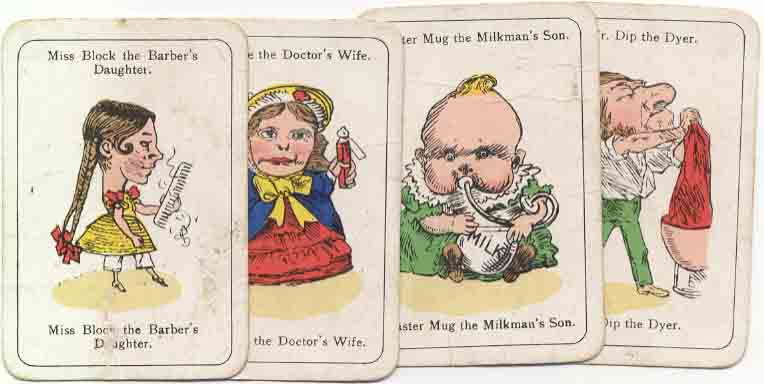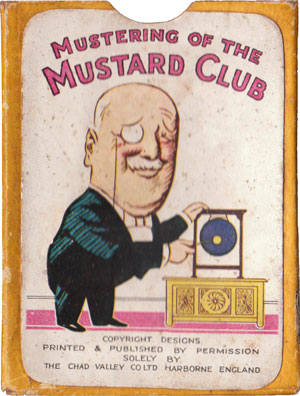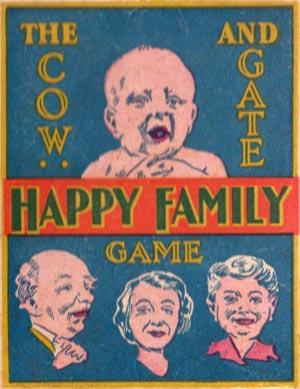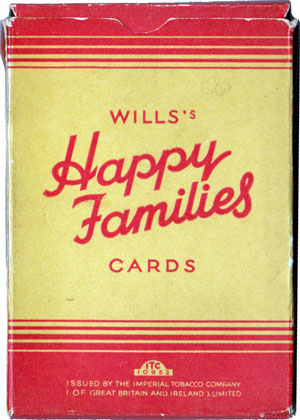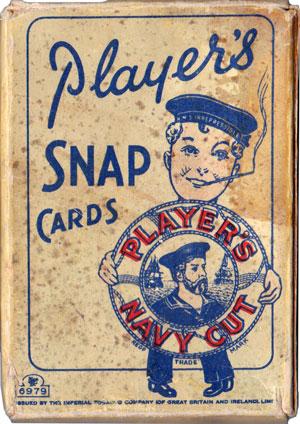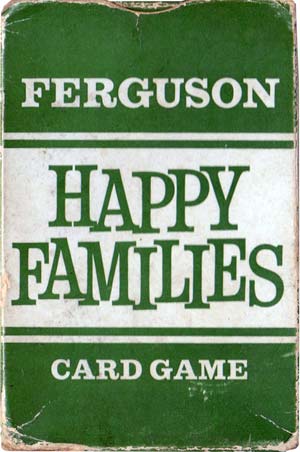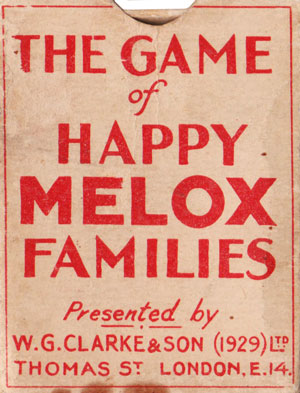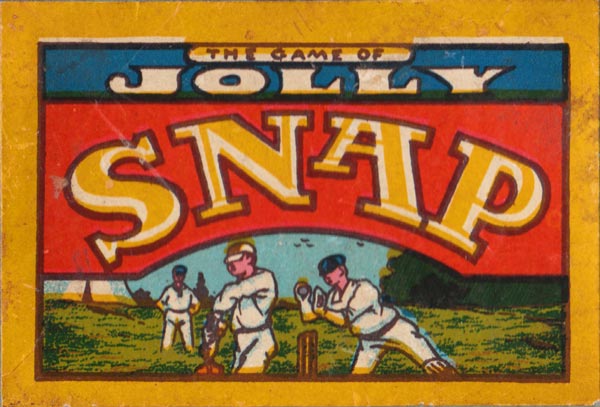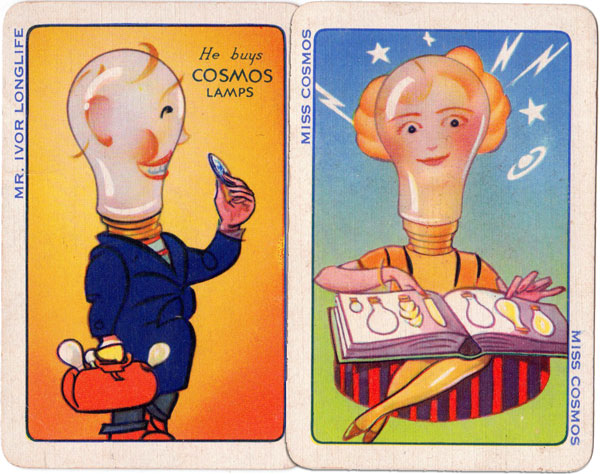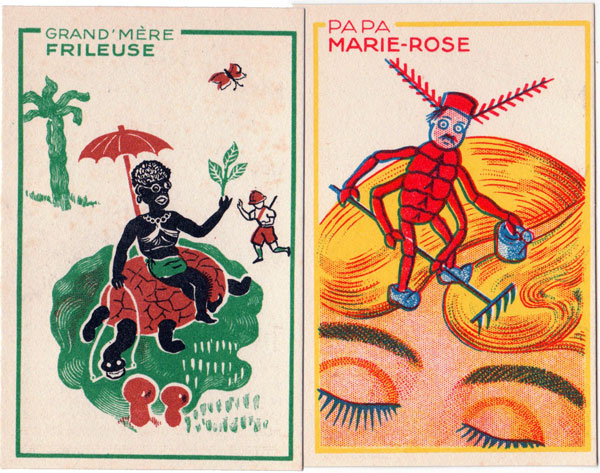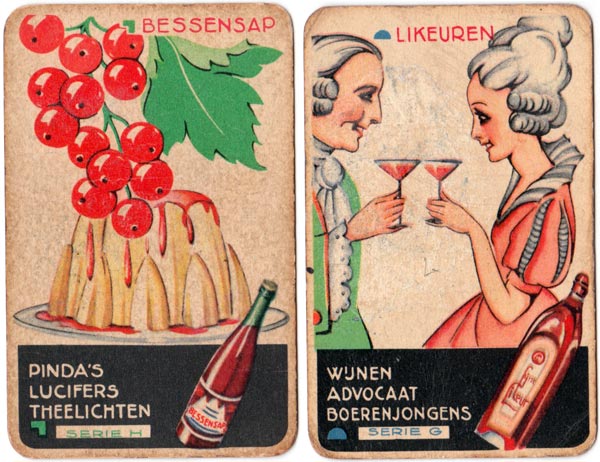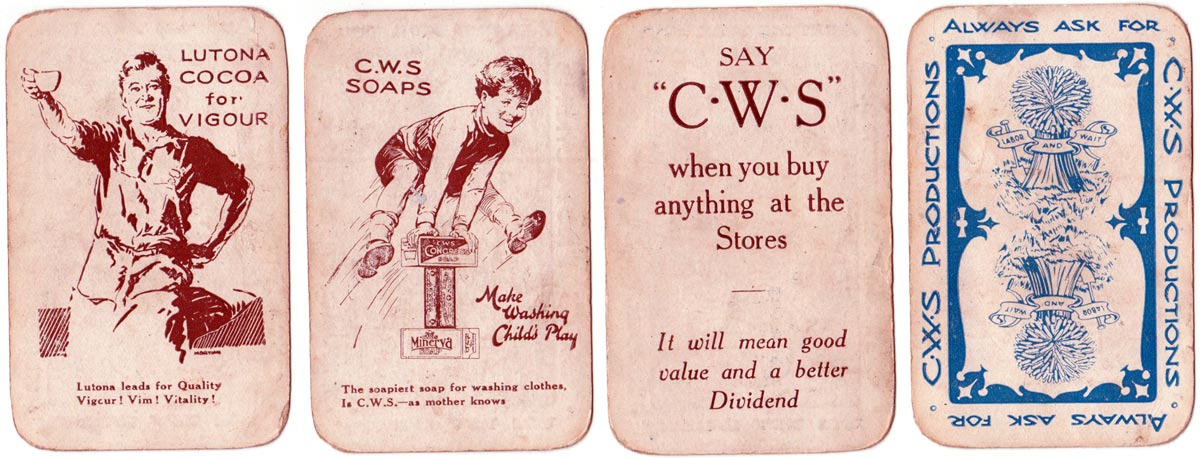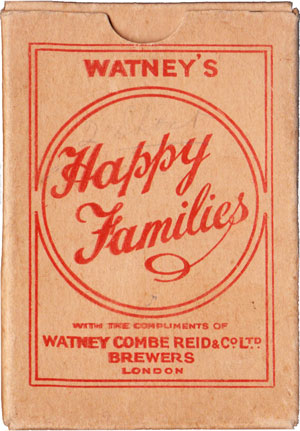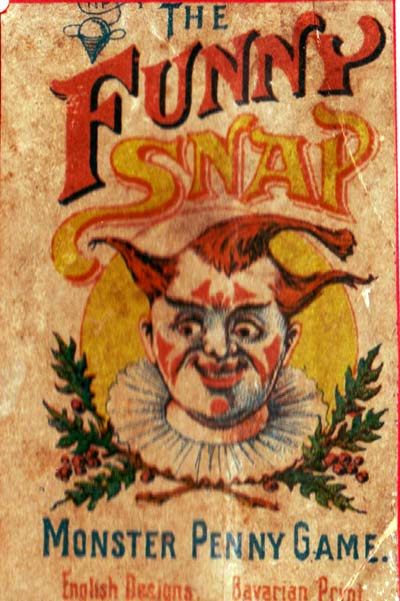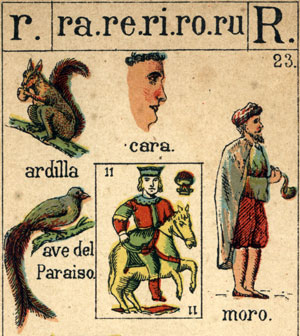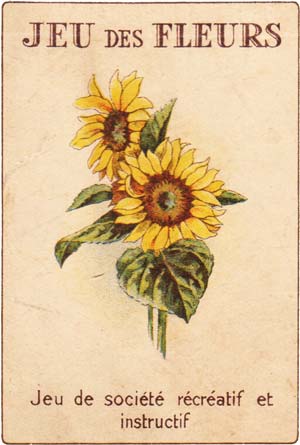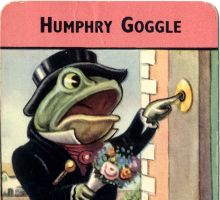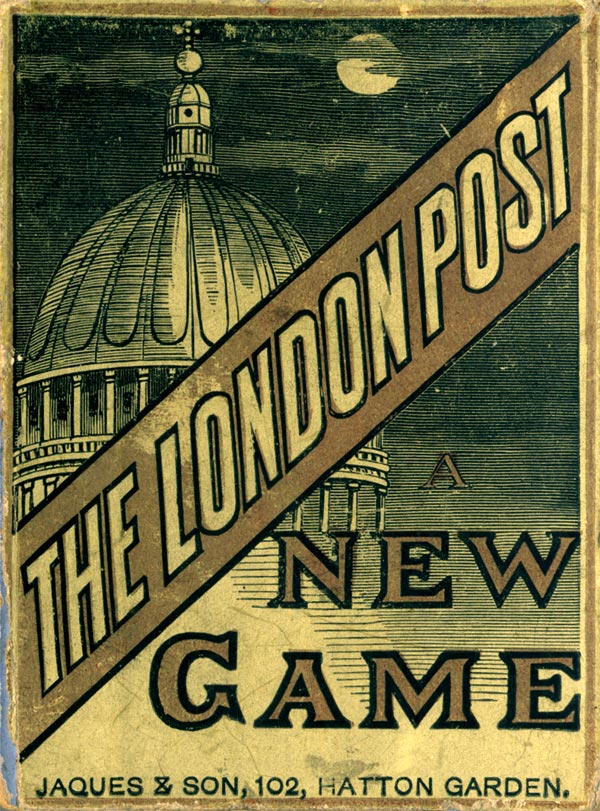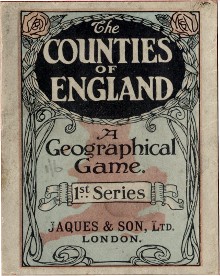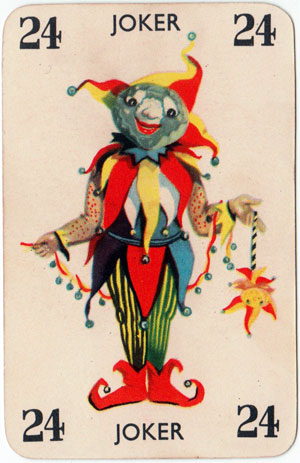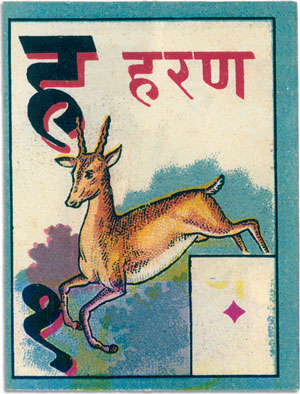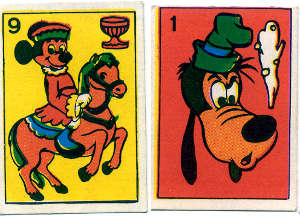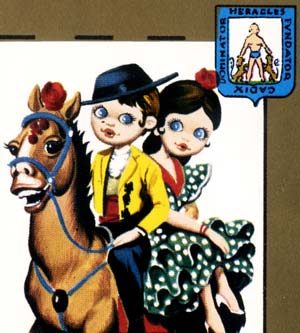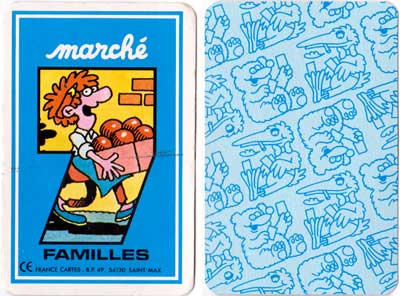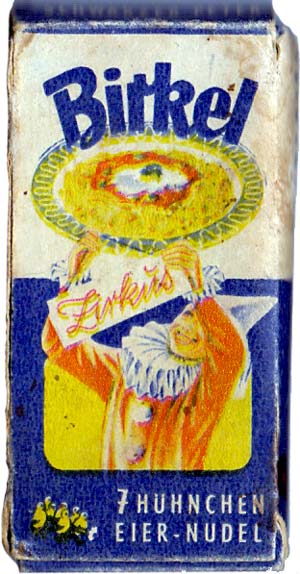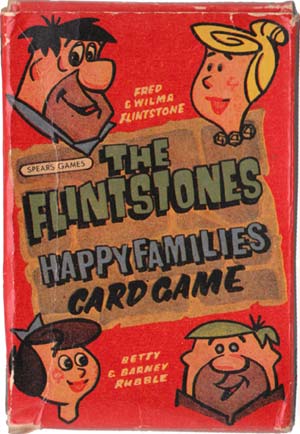Children's Card Games
Children's games are distinct from ordinary playing cards, the most obvious difference being the lack of court cards or suit marks. Happy Families, Old Maid and Snap may teach children about taking turns, following rules, and sharing. These games can also reflect gender norms and stereotypes, often featuring cards with gendered images and roles from their part of the world or era.
Card Games... a child’s poetic universe

Above: cards from The Round Card Game of Happy Families, published by Chad Valley Games, England. 1914 more →
Cards of the past belong to and evoke their period, whether it be a matter of style, fashion or customs. They belong to a cheerful, gregarious, competitive world, and provide the collector, by their associations, with an unusually vivid view of history, nonetheless interesting for being from the sidelines. The study of toys and games reveals interesting coincidences from geographical and historical points of view. In many cases the illustrations provide documentary evidence of social stereotypes, gender relations or racist caricatures from past times, showing how our attitudes have changed.
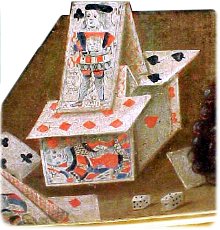
There is a magic in games… from those created in the imagination, such as hide and seek, to those using pieces of paper, sticks or sophisticated manufactured items. Some games recreate the thrill of sporting activities, whilst others give a sense of creativity. Although designed principally for juvenile diversion, toys and card games can assist in a child's emotional, social, mental and physical development. A child's values are learnt from the example of adults, game playing and the media.
Children's games are distinct from ordinary playing cards, with their most obvious difference being the lack of any court cards or suit marks. Instead game cards are either numbered, lettered or grouped in some other way. They also have educational benefits for young children, encouraging congenial play and developing counting, sorting and matching skills, as well as early literacy and flowers or bird identification, whatever the case may be.

Cards specifically designed for the amusement and education of children did not appear until the second half of the 18th century. Those produced at this time tended to have pictorial themes rather than the numerical format we are familiar with today. Children's card games used to be produced to very high quality, both in the materials used and the design and printing. Economic circumstances change, and children's card games today vary in quality and educational value.
A HUGE VARIETY of games has been devised over the years, the best known of which are Happy Families or Quartet games which involve completing sets of cards and declaring these to win the game. However, cards have also been used to tell fairy tales, ask and answer questions, illustrate nature, animals, places, to teach foreign languages, to foster early learning with numbers, spelling, currency, telling the time, and so on.
Learning the ideals of good behaviour came to be regarded as important as the three Rs: the precepts were often found as proverbs or morals on cards, just as they were reproduced in the handwriting copy-books of the day and preached from the pulpit.
Children’s Card Games with Advertising
Sales incentives - from the collection of Rex Pitts
“Old Maid”
“Old Maid” card games were also re-titled in other countries as Black Peter (Schwarzer Peter) in Germany, Zwarte Piet (Netherlands), Svarte Petter (Sweden) and Pekka-Peli (Finland). The main focus of the game is towards the last card, which might be a black cat, an Old Maid, black-faced chimney sweep or black grotesque character.

Above: “Old Maid” children's card game manufactured by Tower Press, England, 1950s see more →.

Above: “Old Maid” children's card game manufactured by Hee Trading Co., Malaysia, 1984 see more →.
Addit
Animal Grab
Animal Snap
Ariel Productions
Belisha
Black Peter
British Towns
Cartes Questions-Devinettes
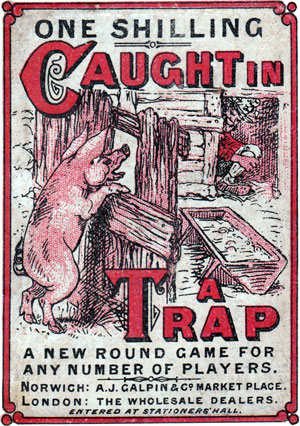 Caught in a Trap
Caught in a Trap
Change for a Shilling
Counties of England
Cow & Gate Happy Family
Cromy
Dartex
Editorial Gráfica Flores
El Negrito Pedro
El Reloj Card Game
Entente Cordiale
Famous Five
Faulkner
Figures Amusantes
Ferguson Happy Families
Fruits et Légumes
Globe Series
Golden Egg Game
Gnav (Norwegian)
Gnav (Danish)
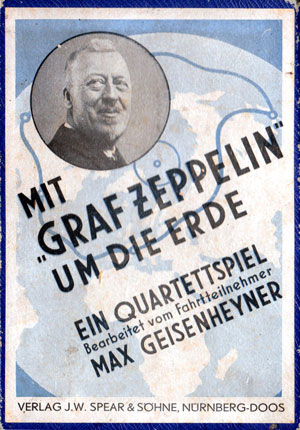 Graf Zeppelin
Graf Zeppelin
Great Galumphus
Grimms' Fairy Tales
Happy Families
Hijitus
Illustrated Proverbs
Indian Alphabetical Cards
Jack-of-all-Trades
Jaques' Games
Jeu des Fleurs
Jewish Quartet Game
Kay Snap
Kingdoms of Europe
Kuhn Khan
La Zoologie
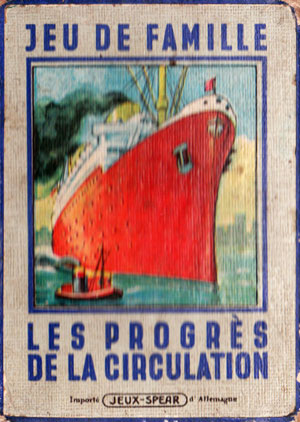 Le Progrès de la Circulation
Le Progrès de la Circulation
Little Folk Misfitz
London Post
Hee Trading Co, Malaysia
Marché 7 Familles
Mauclair Dacier Sept Familles
Melox Happy Families
Mexican Lottery
Mr Turnip's TV Audition
New Game of Animals
Nintendo Mario
Noddy Happy Families
Pekka-Peli
 Pepys Games
Pepys Games
Peruvian Animals Quartet
Philips Sept Familles
Proverbs & Maxims
Quits
Reshuffle
Royal Historical Game
Royal Old Maid
Rush Hour
Snip Snap
Schwarzer Peter
Spanish Educational Cards, 1888
Spanish Historical Characters, 1896
Spanish Regional Costumes, 1986
 Spears Games
Spears Games
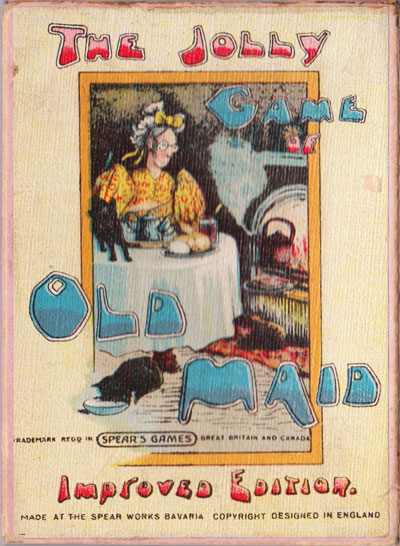 Spears Old Maid c.1900
Spears Old Maid c.1900
St George Game
Tower Press
Vic Joc de Cartes
 Waddy Productions
Waddy Productions
Walt Disney
Wappen Quartett
Watney's Happy Families
Wild Flower Sevens
Woodland Old Maid
Woodland Snap
Zoo Comics

By Simon Wintle
Member since February 01, 1996
I am the founder of The World of Playing Cards (est. 1996), a website dedicated to the history, artistry and cultural significance of playing cards and tarot. Over the years I have researched various areas of the subject, acquired and traded collections and contributed as a committee member of the IPCS and graphics editor of The Playing-Card journal. Having lived in Chile, England, Wales, and now Spain, these experiences have shaped my work and passion for playing cards. Amongst my achievements is producing a limited-edition replica of a 17th-century English pack using woodblocks and stencils—a labour of love. Today, the World of Playing Cards is a global collaborative project, with my son Adam serving as the technical driving force behind its development. His innovative efforts have helped shape the site into the thriving hub it is today. You are warmly invited to become a contributor and share your enthusiasm.
Related Articles

Scientific Whist
“Scientific Whist” : standard cards with instructions for play on the faces by Chas Goodall & Son, 1...

Historic Shakespeare
“Historic Shakespeare” playing cards featuring Shakespearean characters by Chas Goodall & Son.

Heartsette by Herbert Fitch & Co, 1893
A glimpse into a busy print and design office in late Victorian London.

Rap Rummy
Rap Rummy made by Parker Brothers in 1926, only 4 years after the discovery of King Tutankhamen’s to...

German Travel Cards
A travel-themed educational deck helping American tourists visiting Germany.

Can You Believe Your Eyes?
“Can You Believe Your Eyes?” playing cards featuring visual illusions & other oddities.

The European Interchanges Quartets
A card game based around motorway intersections from European countries.

Love Tests
Vintage novelty “Love Test” cards of a slightly saucy nature but all in good fun!

Briefmarken-Quartett
Quartet game featuring postage stamps from the Zones of Occupation in post-WWII Germany.

Doctor Who Trump Card Game
Game for two players in which Doctor Who and the Legendary Legion join battle with the Alien Hordes....

Baraja de Juan Martín Zamorano
Deck inspired by El Pendón de los Zamorano, a military pennant dating from 1501, published by Priego...

Polygo™
Cards of irregular, four-sided shape for playing word and colour games as well as more traditional o...

The UCR Deck
Giant-size cards designed by Thomas Sanders to advertise courses and facilities at UCR.

Verkeers Kwartet
A helpful quartet game celebrating the 75th anniversary of road safety exams making traffic safer.

Pirritx eta Porrotx
Happy Families card game from the Spanish Basque Country.

Question and Answer Games
A card game called “Impertinent Questions and Pertinent Answers” was launched in the early 1920s by ...
Most Popular
Our top articles from the past 28 days


